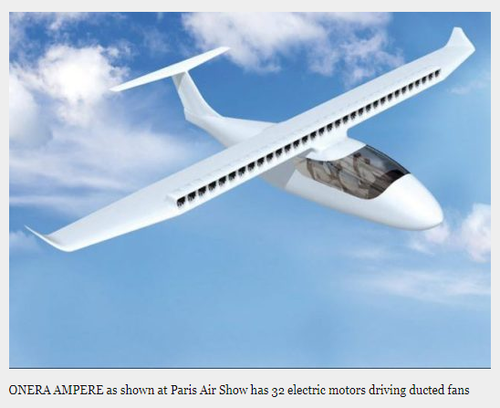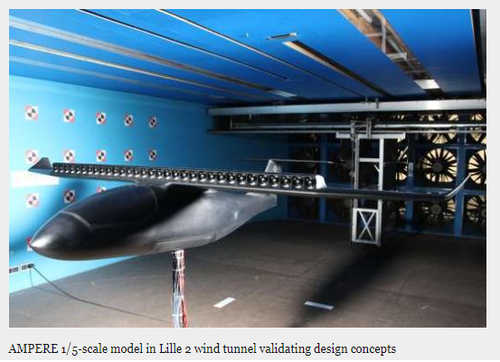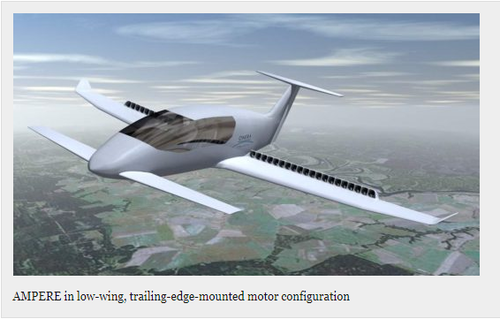- Joined
- 26 May 2006
- Messages
- 34,869
- Reaction score
- 15,733
Hi,
ONERA’s mission statement for its AMPERE (Avion à Motorisation réPartie Électrique de Recherche Expérimentale) electric aircraft is fairly straightforward. “AMPERE is a demonstrator of a regional airplane with electric propulsion distributed, allowing to transport from 4 to 6 people over 500 [kilometers – 310 miles] in 2 hours. The objective of the AMPERE project is to bring to maturity the technology of distributed electric propulsion in order to transfer it to the industry.” ONERA, the Office National d’Etudes et de Recherches Aérospatiales (National Office for the Study and Research of Aerospace) is the French equivalent of NASA.
ONERA showed a one-fifth-scale model of AMPERE at the Paris Air Show last week, with spokesman and designer Jean Hermetz holding forth on the plane’s features. Pardon that the video is in French, but the images are universal. Note the wind tunnel tests at 1:45, showing attached flow over the wing segment on which the electric ducted fans are turning.
 cafe.foundation
cafe.foundation
ONERA’s mission statement for its AMPERE (Avion à Motorisation réPartie Électrique de Recherche Expérimentale) electric aircraft is fairly straightforward. “AMPERE is a demonstrator of a regional airplane with electric propulsion distributed, allowing to transport from 4 to 6 people over 500 [kilometers – 310 miles] in 2 hours. The objective of the AMPERE project is to bring to maturity the technology of distributed electric propulsion in order to transfer it to the industry.” ONERA, the Office National d’Etudes et de Recherches Aérospatiales (National Office for the Study and Research of Aerospace) is the French equivalent of NASA.
ONERA showed a one-fifth-scale model of AMPERE at the Paris Air Show last week, with spokesman and designer Jean Hermetz holding forth on the plane’s features. Pardon that the video is in French, but the images are universal. Note the wind tunnel tests at 1:45, showing attached flow over the wing segment on which the electric ducted fans are turning.
CAFE Foundation Blog - Page 24 of 149 - Information and discussion from the Comparative Aircraft Flight Efficiency (CAFE) Foundation.
Information and discussion from the Comparative Aircraft Flight Efficiency (CAFE) Foundation.



